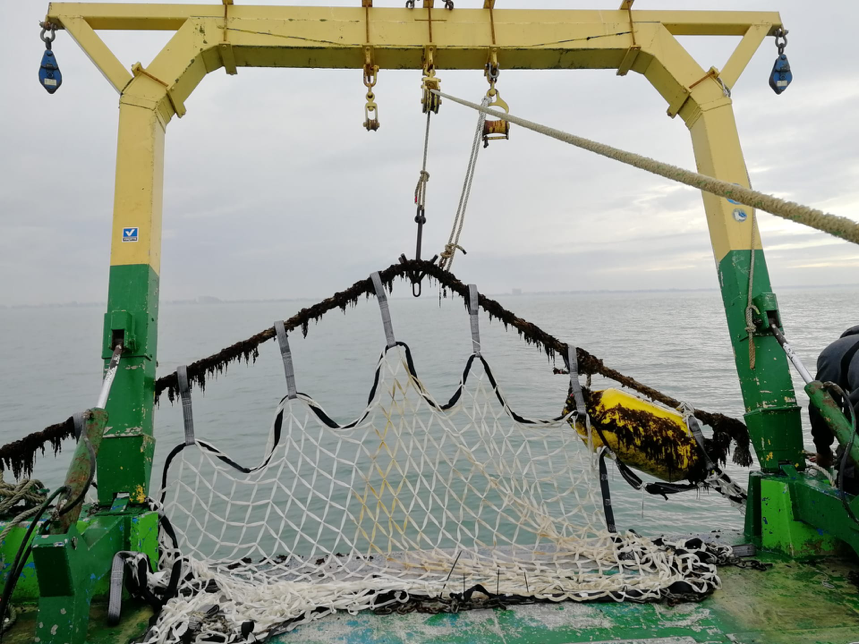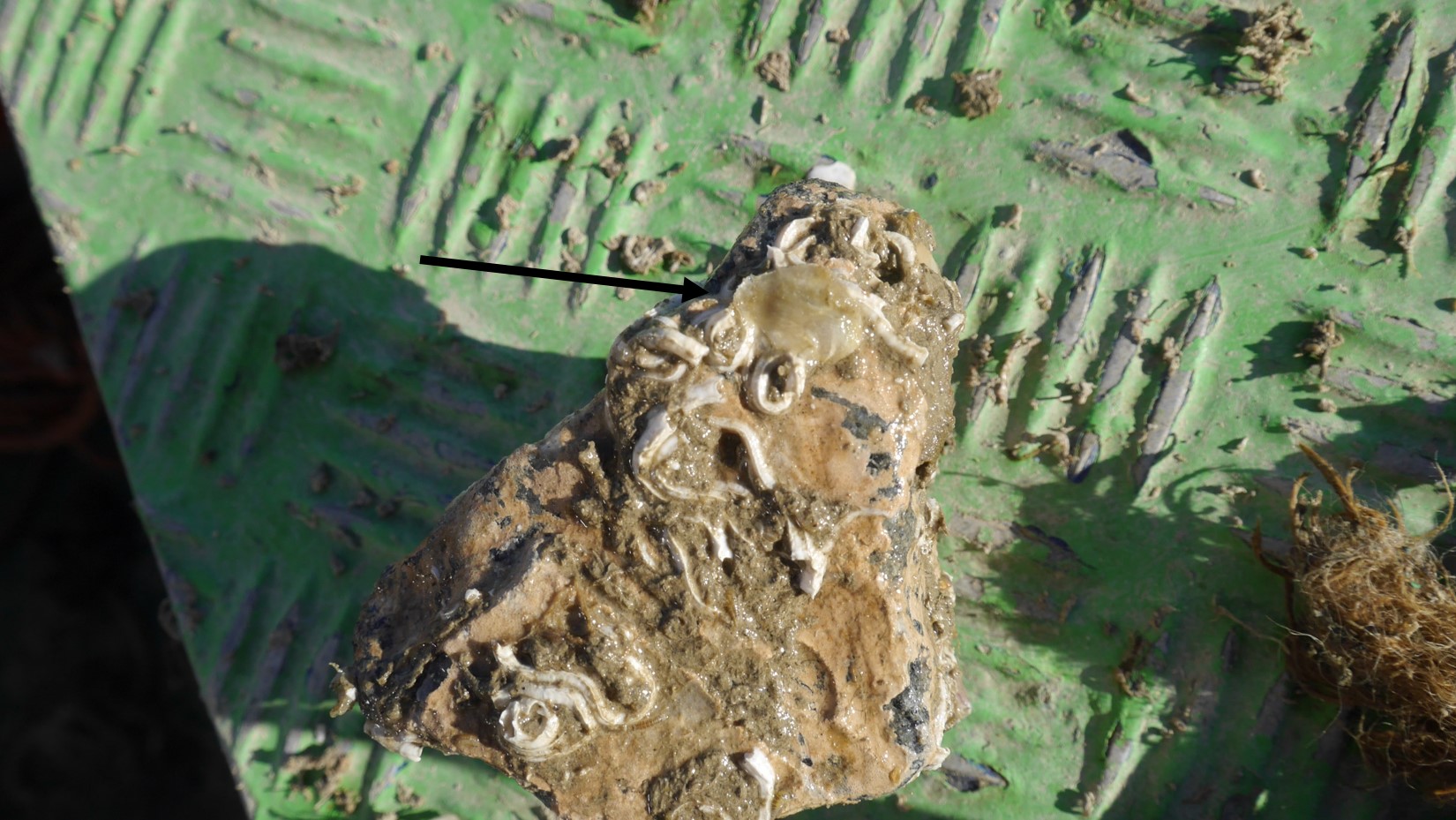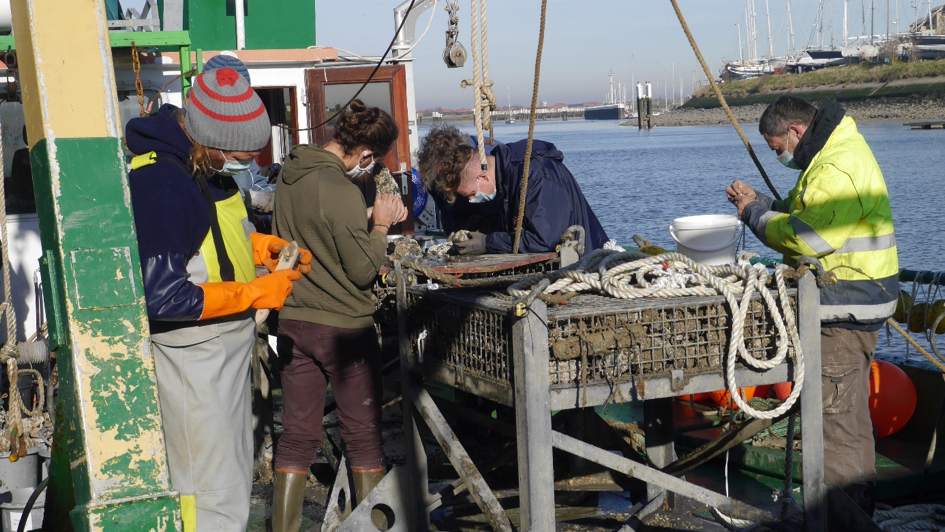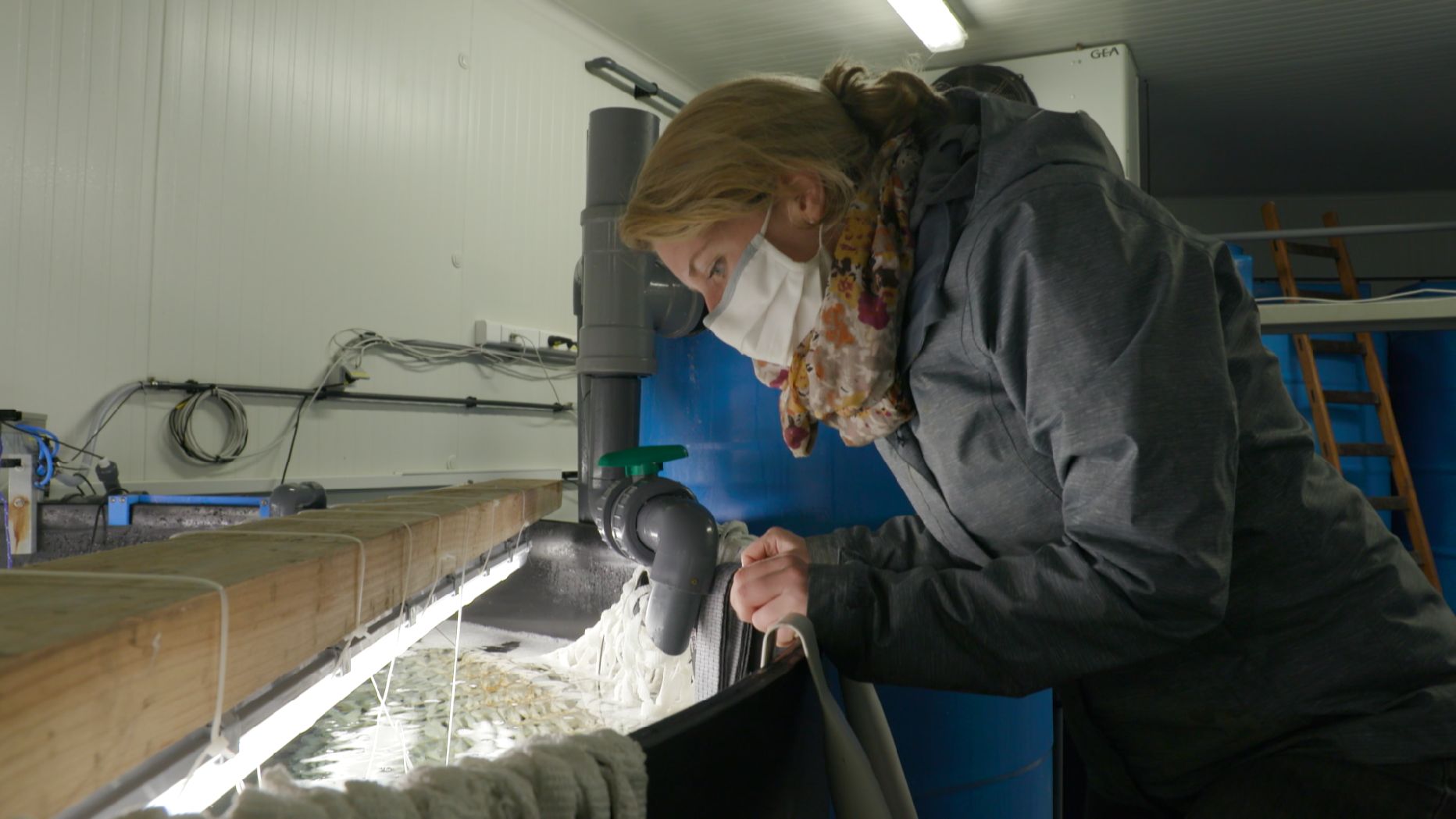At the beginning of November, under a bright autumn sun, the team of the Belgian pilot – one of the 5 demonstration pilots on multiple use of space within the HORIZON 2020 UNITED project – sailed to the Westdiep area, 5 km off the coast of Nieuwpoort on the Stream vessel. Here, aquaculture structures for flat oyster designed by
UGent and
Brevisco and produced by Brevisco, and restoration tables designed and produced by
Jan De Nul Group were deployed at sea during summer time. So it was about time to retrieve these structures for a first evaluation (Figure 1). We were joined by the camera man of
No-Office, who enthusiastically captured our every move (Figure 2).
We wanted to investigate several factors, such as for example settlement of wild oyster spat, robustness of deployed systems, differences in flat oyster settlement between multiple nature-inclusive scour protection materials, efficiency of decommissioning methods, labelling techniques, and differences in biodiversity between substrates. This is a lot of work, so the entire Belgian pilot team helped in the data collection by counting settled oysters, by sampling the different substrates to investigate fouling organisms, and by carefully noting down all these results (Figures 3 and 4). The results are currently being processed.
But the Belgian pilot is more than just flat oyster aquaculture and restoration research: at the beginning of July we also started the preparation of the co-cultivation with sugar kelp starting with the growth of seaweed juveniles. Several seaweed nets, produced by AtSeaNova, were prepared at the Marine Station Ostend (Flanders Marine Institute, Figure 5) to investigate different seeding methods and seaweed strains. These nets were installed at the Westdiep site in mid-November to look for the best feasible way for cultivating seaweed in the Belgian part of the North Sea (Figure 6). After the winter growth season, we will examine the growth of the seaweeds in Spring. Sugar kelp is expected to grow from a tiny juvenile, the size of a pinhead, to a plant measuring over one meter in length in one growth season.
The knowledge gained from these first captivating sea missions nearshore are crucial for the selection of the best performing materials and methods to be applied in the spring of 2021 in an offshore wind farm of Parkwind.
For more information on the project, please visit the websites:
The work done at the Marine Station Ostend makes use of resources, facilities and/or services provided by Flanders Marine Institute and the Marine Biology Research Group of UGent as part of the Belgian contribution to EMBRC-ERIC.

Figure 1: Retrieval of one of the deployed frames (designed by UGent and Brevisco and produced byBrevisco) from the Westdiep area, 5 km off the coast of Nieuwpoort, with vessel Stream and with the
aid of the Brevisco, Research Institute for Agriculture Fisheries and Food, and Ghent University teams. © Nancy Nevejan

Figure 2: Camera man David De Wagter (No-Office) filming the November sun when leaving the
harbour in Nieuwpoort. © Annelies Declercq
Figure 3: Identification of the settlement of a wild flat oyster (arrow) on nature-inclusive scour
protection (Brevisco, Jan De Nul Group, Royal Belgian Institute of Natural Sciences, Research Institute
for Agriculture Fisheries and Food, and Ghent University teams). © Nancy Nevejan
Figure 4: Counting of settlement of wild oysters on nature-inclusive scour protection (Brevisco, Jan
De Nul Group, Royal Belgian Institute of Natural Sciences, Research Institute for Agriculture Fisheries
and Food, and Ghent University teams). © Nancy Nevejan
Figure 5: Inspection of seaweed nets in the sea water tanks of the Marine Station Ostend (Flanders
Marine Institute) before deployment at sea. © David De Wagter (No-Office)

Figure 6: Seaweed nets (produced by AtSeaNova) being installed at the Westdiep site with vessel
Stream (Brevisco). © Jessica Knoop







